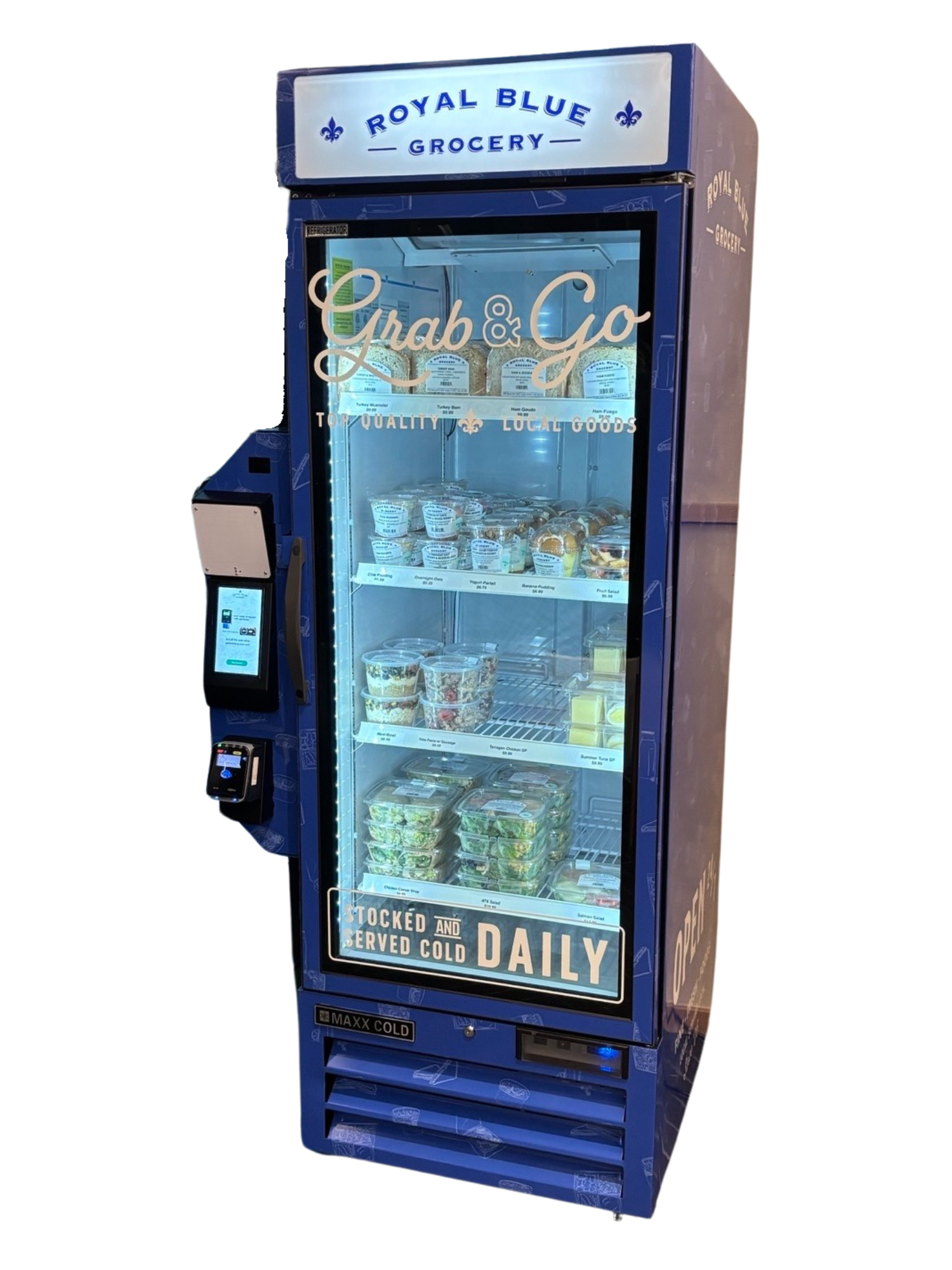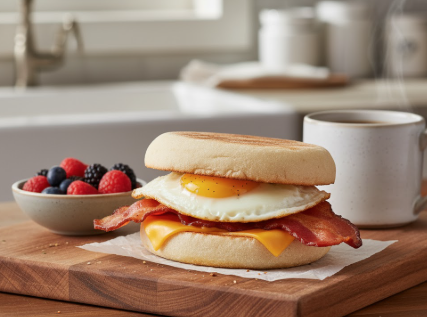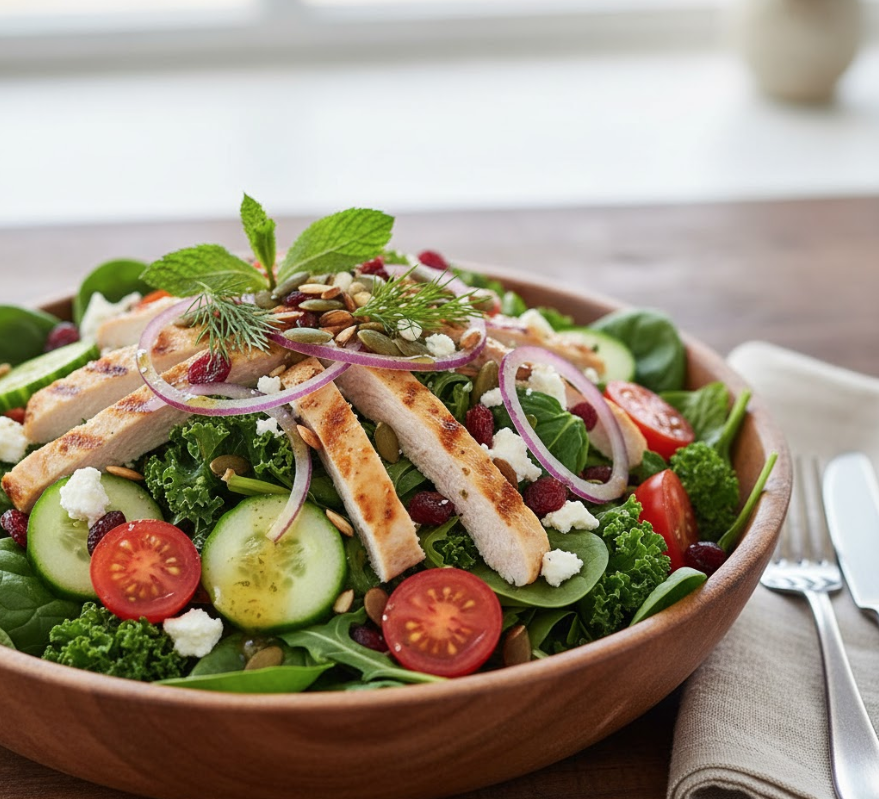The Restaurant Revenue Challenge
Fast casual and quick service restaurants face a persistent challenge: their revenue potential is constrained by operating hours, labor costs, and physical capacity. A restaurant generating strong lunch and dinner traffic still leaves money on the table during off-peak hours—early mornings, late nights, and the gaps between meal rushes when staffing a full counter doesn't make economic sense.
Consider the typical fast casual restaurant financial reality:
- Prime lunch hours (11:30am-1:30pm): High traffic, full staff, maximum revenue
- Dinner rush (5:30pm-7:30pm): Strong performance, full operations
- Off-peak periods: Minimal traffic, but still paying for space, utilities, and some staff
- Closed hours (10pm-6am): Zero revenue despite rent, insurance, and overhead continuing
Meanwhile, potential customers in the area—shift workers heading home at 11pm, early risers looking for breakfast at 6am, office workers grabbing a quick snack at 3pm—have no access to the restaurant's food during these periods. The restaurant is paying for the real estate around the clock but only generating revenue during a fraction of those hours.
Labor costs compound the challenge. Staffing even a skeleton crew during slow periods can cost $100-200 per shift while generating minimal revenue. For many restaurants, the math simply doesn't work to stay open beyond core hours, even though customer demand exists.
Restaurant grab-and-go solutions using smart vending machines and automated food kiosks address these challenges by enabling restaurants to extend their revenue-generating hours without proportional increases in labor costs, capture new customer segments, and even expand into satellite locations with minimal overhead.
What Are Automated Restaurant Kiosks?
 Automated restaurant kiosks are smart vending machines designed specifically for prepared food service. Unlike traditional vending machines limited to pre-packaged snacks and beverages, modern automated food kiosks use RFID (Radio Frequency Identification) technology and commercial refrigeration to safely store and dispense restaurant-quality prepared meals.
Automated restaurant kiosks are smart vending machines designed specifically for prepared food service. Unlike traditional vending machines limited to pre-packaged snacks and beverages, modern automated food kiosks use RFID (Radio Frequency Identification) technology and commercial refrigeration to safely store and dispense restaurant-quality prepared meals.
Key Features of Restaurant Food Vending Solutions
RFID Technology for Precise Inventory Control:
Each prepared food item is tagged with an RFID chip containing product information, pricing, and food safety data. When customers make selections, the system automatically detects which items are removed, processes payment instantly, updates inventory in real-time, tracks which menu items are popular, and monitors expiration dates to ensure food safety.
This RFID vending technology eliminates the shrinkage (theft and waste) that plagues traditional open-access food service, ensuring every item removed is paid for and accounted for.
Commercial-Grade Refrigeration:
Restaurant food requires precise temperature control to maintain quality and safety. Automated restaurant kiosks incorporate commercial refrigeration systems maintaining temperatures between 34-38°F with continuous monitoring and automatic alerts if conditions fluctuate.
24/7 Unattended Operation:
Once stocked, these systems operate continuously without staff supervision. Customers can access fresh prepared food any time of day or night, dramatically extending the restaurant's effective operating hours without adding labor costs.
Branded Customization:
Unlike generic vending machines, restaurant vending solutions can be fully customized with restaurant branding—custom exterior wraps featuring restaurant logos and colors, branded touchscreen interfaces, menu displays matching restaurant aesthetic, and promotional messaging.
Multiple Payment Options:
Modern restaurant self-service kiosks support credit and debit cards, mobile payments (Apple Pay, Google Pay, Samsung Pay), contactless payment, restaurant loyalty program integration, and corporate account billing for office building placements.
Real-Time Remote Management:
Restaurant operators can monitor and manage kiosks remotely—tracking sales and inventory from any device, adjusting pricing instantly, updating menu offerings, monitoring unit health, and analyzing customer purchasing patterns.
Restaurant Grab-and-Go Use Cases
Automated food kiosks serve multiple strategic purposes for restaurant operators:
Extended Hours Within Existing Location
The Opportunity:
Restaurants can place branded fresh food vending machines in their own lobbies or adjacent spaces, enabling customers to purchase prepared food during off-hours when the restaurant is closed.
How It Works:
During operating hours, the restaurant prepares additional portions of popular menu items specifically for the automated kiosk. As the restaurant closes for the night, customers can still access sandwiches, salads, bowls, and other prepared items through the self-service kiosk.
Revenue Impact:
A restaurant generating $800,000 annually during 60 operating hours per week has 108 non-operating hours per week—64% of total weekly hours producing zero revenue. Even modest late-night and early-morning sales through automated kiosks ($50-150 per non-operating day) can add $18,000-$55,000 in annual revenue with minimal incremental costs.
Satellite Locations in High-Traffic Venues
The Opportunity:
Restaurants can establish branded presence in office buildings, hotels, hospitals, universities, and transportation hubs without the overhead of full restaurant buildouts.
Strategic Advantages:
- Lower Capital Investment: A $7,500 automated kiosk vs. $250,000-500,000+ for traditional restaurant location
- No Additional Labor: Existing restaurant staff prepares food; delivery service stocks the kiosk
- Test New Markets: Validate demand in a geographic area before committing to full restaurant
- Brand Exposure: Branded kiosks introduce the restaurant to new customer segments
- Multiple Locations: Place 5-10 kiosks throughout a market for less than one traditional buildout
Ideal Venue Partners:
- Office Buildings: Serve employees during workday and early/late shifters
- Hotels: Provide guests with quality grab-and-go options beyond typical hotel food
- Hospitals: Serve staff, patients, and visitors needing convenient meal access 24/7
- Universities: Reach students in residence halls, libraries, and academic buildings
- Corporate Campuses: Serve large employee populations as alternative to cafeterias
Breakfast and Off-Peak Dayparts
 The Breakfast Opportunity:
The Breakfast Opportunity:
Many fast casual restaurants don't open until 10:30am or 11am because breakfast traffic doesn't justify full staffing. However, breakfast demand exists—office workers, early shifters, and morning exercisers all need convenient breakfast options.
The Solution:
Stock with breakfast sandwiches and wraps, overnight oats and parfaits, fresh fruit and yogurt, coffee and beverages, and grab-and-go breakfast bowls. Customers access breakfast from 6am-10am through the kiosk, then transition to full-service lunch once the restaurant opens.
Late-Night Revenue Without Late-Night Staffing
The Late-Night Challenge:
Bars, entertainment districts, college campuses, and urban areas all have significant late-night food demand (10pm-3am). However, staffing full restaurant operations during these hours rarely makes financial sense due to higher late-night labor costs, safety concerns for staff, limited traffic compared to peak hours, and difficulty finding reliable late-night employees.
The Automated Solution:
Place branded 24 hour restaurant vending kiosks in strategic late-night locations—entertainment districts near bars and venues, college campus areas with nightlife, 24-hour fitness centers, hospital areas serving night shift workers, and transportation hubs. The restaurant generates revenue serving the late-night market without exposing staff to safety risks or paying premium late-night wages.
Understanding Restaurant Kiosk Economics
The financial performance of automated restaurant kiosks varies significantly based on location type, traffic patterns, menu pricing, and operational efficiency. A kiosk in a busy office building will perform very differently than one providing late-night service at a single restaurant location.
Initial Investment:
- REDYREF Smart Fridge, Smart Cabinet, or Smart Freezer: $7,500 each
- Optional custom branding wrap (pricing varies based on design complexity)
- Financing available at approximately $300/month
The units are plug-and-play with straightforward installation. REDYREF provides remote support if operators have questions during setup.
Ongoing Monthly Costs:
- Technology support fee (includes cellular connectivity): $199/month
- Transaction fee: $0.25 per transaction plus standard merchant processing fees
- RFID tags: $0.18 per tag
- Food cost (typically 28-32% of revenue for restaurants)
- Delivery/restocking labor
The key to evaluating ROI for your restaurant is understanding your specific use case—whether you're extending hours at an existing location, testing a new market, or serving a high-traffic venue—and modeling realistic transaction volumes and pricing for that scenario.
REDYREF can work with you to analyze comparable installations and help develop realistic projections based on your specific restaurant concept and target locations.
Operational Considerations for Restaurants
Menu Selection and Food Preparation
 Ideal Menu Items:
Ideal Menu Items:
Sandwiches and Wraps: Travel well, hold quality for 24-48 hours refrigerated, easy to portion and package, high perceived value
Salads and Bowls: Healthy food vending option, keep dressing separate to maintain freshness, protein options appeal to diverse customers
Prepared Entrees: Pasta dishes, rice bowls, protein + vegetable combinations
Breakfast Items: Breakfast sandwiches and wraps, parfaits and overnight oats, protein boxes
Items to Avoid: Foods requiring extensive assembly, items with very short shelf life, products needing specific temperature zones beyond standard refrigeration, messy items difficult to package cleanly
Food Safety and Quality Management
Shelf Life Management:
RFID technology automatically tracks production dates, monitors expiration dates continuously, sends automatic alerts when items approach expiration, and can prevent sale of expired products.
Temperature Control:
Commercial refrigeration maintains continuous temperature monitoring (34-38°F), automatic alerts if temperature fluctuates, remote monitoring for immediate response, and locked units during power failures.
Packaging Requirements:
Sealed containers preventing contamination, clear nutritional labeling, ingredient lists and allergen warnings, tamper-evident seals, and professional presentation reflecting restaurant brand.
Restocking and Inventory Management
Restocking Frequency:
Most restaurant kiosks require restocking 2-4 times weekly:
- High-traffic locations: Daily or every other day
- Moderate traffic: 2-3 times weekly
- Lower volume: 2 times weekly
Inventory Optimization:
Real-time sales data enables smart restocking—stock more of fast-moving items, reduce slow sellers, adjust for day-of-week patterns, respond to seasonal preferences, and test new menu items with minimal risk.
Venue Partnership Management
For Satellite Locations:
Site Selection: High foot traffic areas, proximity to target customers, electrical and network connectivity, security and monitoring, adequate space (10-15 square feet)
Partnership Agreements: Revenue sharing arrangements, exclusivity terms, maintenance responsibilities, operating hours and access, branding and promotional cooperation
Venue Benefits: Amenity for building occupants, revenue generation for venue, reduced pressure on existing food service, modern premium food options
Brand Control and Customer Experience
Quality Consistency
The food in automated kiosks comes from the same kitchen, using the same recipes, with the same quality standards as the full-service restaurant. This ensures consistent taste and quality, brand integrity maintained, customer expectations met, and reputation protected.
Unlike traditional vending machine food from anonymous suppliers, restaurant grab-and-go solutions showcase the restaurant's actual menu items, prepared to restaurant standards.
Menu Flexibility
Restaurants can rotate kiosk menus seasonally, test new menu items through kiosks before adding to main restaurant menu, or feature limited-time offerings exclusively through automated channels. The touchscreen interface can feature daily specials, combo offers, loyalty program promotions, and nutritional information highlighting.
Customer Data and Insights
Automated restaurant kiosks provide data traditional restaurants rarely capture:
Transaction Analytics: Which items sell best at which times, customer purchasing patterns, average transaction values, peak usage periods, geographic performance differences
Menu Optimization: Data-driven decisions about which items to expand or eliminate, optimal pricing strategies, bundle and combo opportunities, introduction timing for new items
This intelligence informs both kiosk operations and the core restaurant strategy.
Competitive Advantages for Restaurant Operators
Labor Cost Management
Restaurant labor costs continue rising with minimum wage increases, competition for quality employees, training costs and turnover, and benefits compliance costs. Restaurant food vending extends service hours and reach without proportional labor cost increases—generating revenue during hours that wouldn't justify staffing, serving additional locations without location-specific employees, and focusing human labor on tasks that truly require it.
Real Estate Efficiency
Traditional Restaurant Limitations: High rent for prime locations, long-term lease commitments, expensive buildouts ($250-500K+), geographic limitations
Kiosk Advantages: Minimal space requirements (10-15 sq ft), flexible placement options, low capital investment, easy to add or remove locations, test markets before major commitments
Why REDYREF for Restaurant Grab-and-Go Solutions
REDYREF brings over 100 years of kiosk manufacturing experience to restaurant automation. Our company's client portfolio includes hotels, hospitals, universities, and office buildings—all environments requiring high-quality food service solutions.
Manufacturing Quality
In-House Manufacturing: REDYREF's in-house production enables custom exterior branding with restaurant colors and logos, modified configurations for specific restaurant needs, quality control throughout production, and long-term parts availability.
ISO 9001:2015 Certification: Certified manufacturing processes ensure consistent quality and reliability—critical when restaurants depend on automated systems for revenue generation.
Scalable Solutions
Whether testing with a single $7,500 kiosk or deploying 20+ units across a market, REDYREF's solutions scale with consistent equipment, centralized monitoring and management, and proven reliability supporting growth.
Technology Platform and Support
Remote Management System: Comprehensive dashboard providing real-time inventory across all locations, sales analytics by location/time/item, temperature monitoring and alerts, and equipment health monitoring.
Responsive Support: 24/7 monitoring for critical issues, rapid response for equipment problems, remote diagnostics minimizing downtime, and dedicated support for multi-location deployments.
Getting Started: Implementation Path
Phase 1: Concept Validation (1-3 months)
Install a single kiosk at your existing restaurant location or a high-potential venue. Stock with 15-20 core menu items and monitor sales patterns, customer feedback, and operational challenges.
Investment: Equipment starting at $7,500, or approximately $300/month with financing
Success Metrics: Daily transaction volume, average transaction value, customer satisfaction, operational efficiency, profitability per unit
Phase 2: Strategic Expansion (3-12 months)
Based on pilot success, identify 3-5 additional strategic locations. Negotiate venue partnerships, implement optimized menu based on pilot data, establish dedicated restocking routes, and deploy monitoring systems.
Success Metrics: Revenue per location, profitable unit count, operational efficiency improvements, brand awareness, customer acquisition
This phased approach allows restaurants to validate concepts before major investment, learn and adapt based on real performance, build confidence with stakeholders, and minimize financial risk.
Talk to Us!
Automated restaurant kiosks using RFID vending technology enable restaurants to generate revenue 24 hours a day across multiple locations with infrastructure investments that would have covered a single traditional restaurant opening just a few years ago.
For fast casual and quick service restaurants facing labor challenges, rising costs, and increased competition, automated grab-and-go solutions offer a strategic path to increase revenue per existing location, extend brand reach without traditional expansion costs, serve customer segments currently underserved, and improve operational efficiency and profitability.
Whether your restaurant operates a single location looking to extend hours or is a growing chain seeking efficient market expansion, REDYREF's automated fresh food kiosks provide the technology, reliability, and support to succeed.
Ready to explore how restaurant grab-and-go solutions can transform your business? Contact REDYREF today to discuss your specific restaurant concept, target markets, and growth goals.

 Automated restaurant kiosks are smart vending machines designed specifically for prepared food service. Unlike traditional vending machines limited to pre-packaged snacks and beverages, modern automated food kiosks use RFID (Radio Frequency Identification) technology and commercial refrigeration to safely store and dispense restaurant-quality prepared meals.
Automated restaurant kiosks are smart vending machines designed specifically for prepared food service. Unlike traditional vending machines limited to pre-packaged snacks and beverages, modern automated food kiosks use RFID (Radio Frequency Identification) technology and commercial refrigeration to safely store and dispense restaurant-quality prepared meals. The Breakfast Opportunity:
The Breakfast Opportunity: Ideal Menu Items:
Ideal Menu Items: